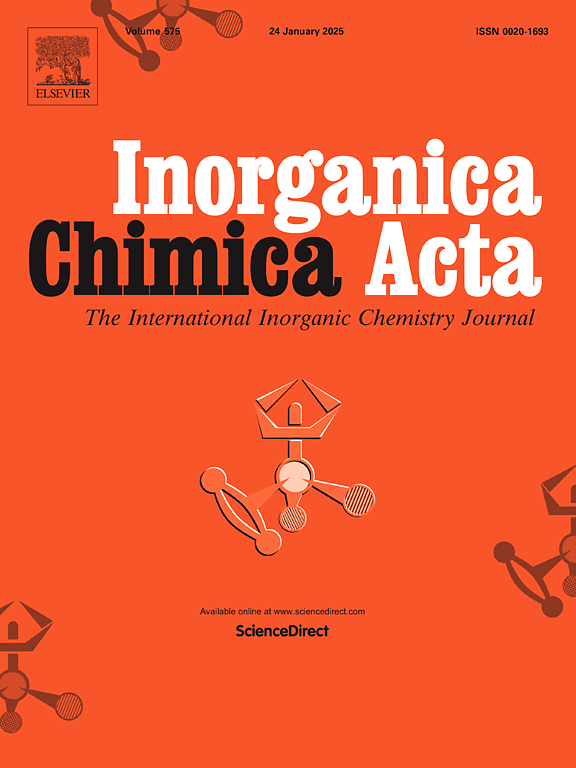Self-assembled palladium(II) metallacycles bearing imidazole motifs: Synthesis, characterization, and their in vitro cytotoxicity evaluation
IF 2.7
3区 化学
Q2 CHEMISTRY, INORGANIC & NUCLEAR
引用次数: 0
Abstract
Four unique highly charged palladacycles (Pd1–Pd4) were synthesized in high yield using a linear and rotationally flexible diimidazole donor tecton 4,4′-di(1H-imidazol-1-yl)-1,1′-biphenyl (L1) in combination with cis-blocked [Pd(en)(NO3)2] acceptor and various other rigid pyridyl donors. A combination of NMR (1H NMR and 1H–DOSY), mass spectrometry (MS), and density functional theory (DFT) calculations were used to characterize the metallacycles. Theoretical studies revealed the presence of adequate cavity dimensions in the palladacycles. Literature reviews have shown that strongly coordinating or chelating ligands can stabilize palladium ions, reducing their physiological reactivity while enhancing their anticancer properties. Palladium(II) complexes are reported to exhibit significant cytotoxic effects towards triple negative breast cancer cell line MDA-MB-231. In light of this, the cytotoxicity of synthesized palladacycles (Pd1–Pd4) was examined. The data revealed that palladacycles (Pd1-Pd4) exhibited selective cytotoxicity, effectively targeting human triple-negative breast cancer cells (MDA-MB-231) while remaining nontoxic at the same inhibitory concentration (IC50) to healthy human embryonic kidney cells (HEK-293). This study shows the utility of Pd1–Pd4 as potential cytotoxic agents. Further, this research opens new avenues for advanced research and clinical trials in the foreseeable future.

求助全文
约1分钟内获得全文
求助全文
来源期刊

Inorganica Chimica Acta
化学-无机化学与核化学
CiteScore
6.00
自引率
3.60%
发文量
440
审稿时长
35 days
期刊介绍:
Inorganica Chimica Acta is an established international forum for all aspects of advanced Inorganic Chemistry. Original papers of high scientific level and interest are published in the form of Articles and Reviews.
Topics covered include:
• chemistry of the main group elements and the d- and f-block metals, including the synthesis, characterization and reactivity of coordination, organometallic, biomimetic, supramolecular coordination compounds, including associated computational studies;
• synthesis, physico-chemical properties, applications of molecule-based nano-scaled clusters and nanomaterials designed using the principles of coordination chemistry, as well as coordination polymers (CPs), metal-organic frameworks (MOFs), metal-organic polyhedra (MPOs);
• reaction mechanisms and physico-chemical investigations computational studies of metalloenzymes and their models;
• applications of inorganic compounds, metallodrugs and molecule-based materials.
Papers composed primarily of structural reports will typically not be considered for publication.
 求助内容:
求助内容: 应助结果提醒方式:
应助结果提醒方式:


